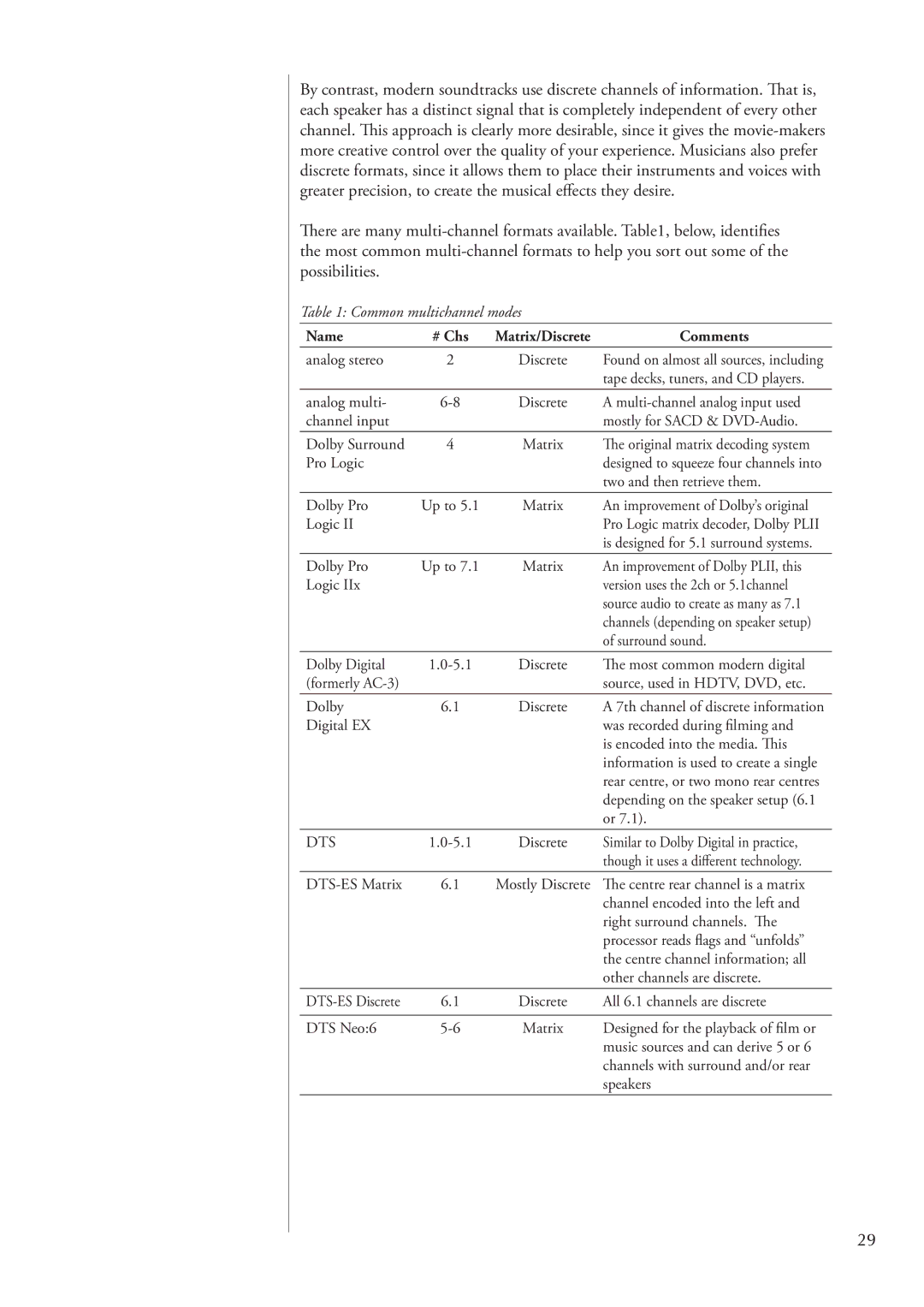
By contrast, modern soundtracks use discrete channels of information. That is, each speaker has a distinct signal that is completely independent of every other channel. This approach is clearly more desirable, since it gives the
There are many
Table 1: Common multichannel modes
Name | # Chs | Matrix/Discrete | Comments |
analog stereo | 2 | Discrete | Found on almost all sources, including |
|
|
| tape decks, tuners, and CD players. |
analog multi- | Discrete | A | |
channel input |
|
| mostly for SACD & |
Dolby Surround | 4 | Matrix | The original matrix decoding system |
Pro Logic |
|
| designed to squeeze four channels into |
|
|
| two and then retrieve them. |
Dolby Pro | Up to 5.1 | Matrix | An improvement of Dolby’s original |
Logic II |
|
| Pro Logic matrix decoder, Dolby PLII |
|
|
| is designed for 5.1 surround systems. |
Dolby Pro | Up to 7.1 | Matrix | An improvement of Dolby PLII, this |
Logic IIx |
|
| version uses the 2ch or 5.1channel |
|
|
| source audio to create as many as 7.1 |
|
|
| channels (depending on speaker setup) |
|
|
| of surround sound. |
Dolby Digital | Discrete | The most common modern digital | |
(formerly |
|
| source, used in HDTV, DVD, etc. |
Dolby | 6.1 | Discrete | A 7th channel of discrete information |
Digital EX |
|
| was recorded during filming and |
|
|
| is encoded into the media. This |
|
|
| information is used to create a single |
|
|
| rear centre, or two mono rear centres |
|
|
| depending on the speaker setup (6.1 |
|
|
| or 7.1). |
DTS | Discrete | Similar to Dolby Digital in practice, | |
|
|
| though it uses a different technology. |
6.1 | Mostly Discrete | The centre rear channel is a matrix | |
|
|
| channel encoded into the left and |
|
|
| right surround channels. The |
|
|
| processor reads flags and “unfolds” |
|
|
| the centre channel information; all |
|
|
| other channels are discrete. |
6.1 | Discrete | All 6.1 channels are discrete | |
|
|
|
|
DTS Neo:6 | Matrix | Designed for the playback of film or | |
|
|
| music sources and can derive 5 or 6 |
|
|
| channels with surround and/or rear |
|
|
| speakers |
29
